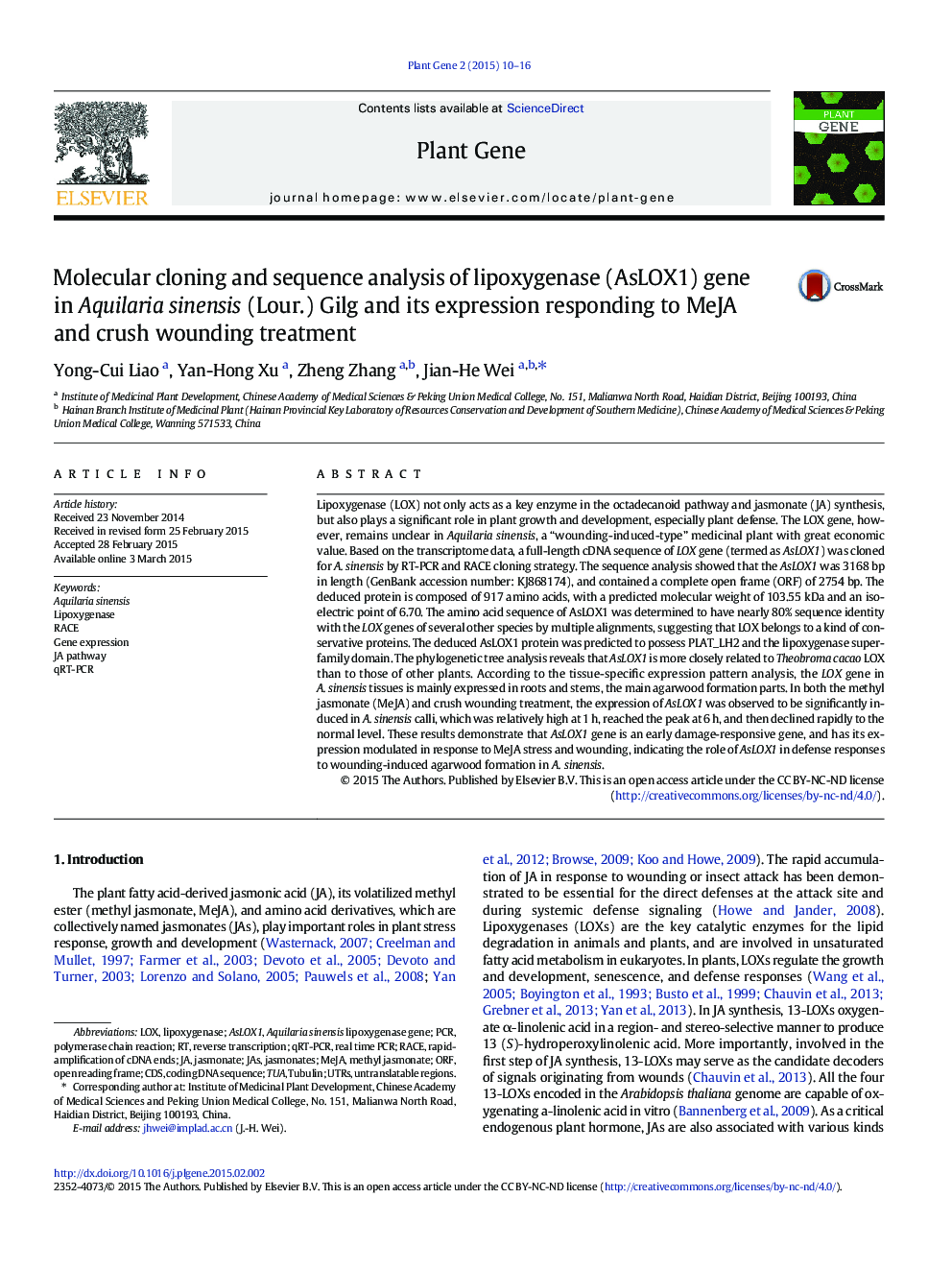| Article ID | Journal | Published Year | Pages | File Type |
|---|---|---|---|---|
| 2823997 | Plant Gene | 2015 | 7 Pages |
•For the first time a full-length cDNA sequence of AsLOX1 is cloned from A. sinensis tree.•AsLOX1 gene sequence and its deduced protein characteristics are analyzed by bioinformatics tools.•AsLOX1 is expressed mainly in roots and stems by qRT-PCR.•AsLOX1 is significantly induced by MeJA and crush wounding.
Lipoxygenase (LOX) not only acts as a key enzyme in the octadecanoid pathway and jasmonate (JA) synthesis, but also plays a significant role in plant growth and development, especially plant defense. The LOX gene, however, remains unclear in Aquilaria sinensis, a “wounding-induced-type” medicinal plant with great economic value. Based on the transcriptome data, a full-length cDNA sequence of LOX gene (termed as AsLOX1) was cloned for A. sinensis by RT-PCR and RACE cloning strategy. The sequence analysis showed that the AsLOX1 was 3168 bp in length (GenBank accession number: KJ868174), and contained a complete open frame (ORF) of 2754 bp. The deduced protein is composed of 917 amino acids, with a predicted molecular weight of 103.55 kDa and an isoelectric point of 6.70. The amino acid sequence of AsLOX1 was determined to have nearly 80% sequence identity with the LOX genes of several other species by multiple alignments, suggesting that LOX belongs to a kind of conservative proteins. The deduced AsLOX1 protein was predicted to possess PLAT_LH2 and the lipoxygenase superfamily domain. The phylogenetic tree analysis reveals that AsLOX1 is more closely related to Theobroma cacao LOX than to those of other plants. According to the tissue-specific expression pattern analysis, the LOX gene in A. sinensis tissues is mainly expressed in roots and stems, the main agarwood formation parts. In both the methyl jasmonate (MeJA) and crush wounding treatment, the expression of AsLOX1 was observed to be significantly induced in A. sinensis calli, which was relatively high at 1 h, reached the peak at 6 h, and then declined rapidly to the normal level. These results demonstrate that AsLOX1 gene is an early damage-responsive gene, and has its expression modulated in response to MeJA stress and wounding, indicating the role of AsLOX1 in defense responses to wounding-induced agarwood formation in A. sinensis.
